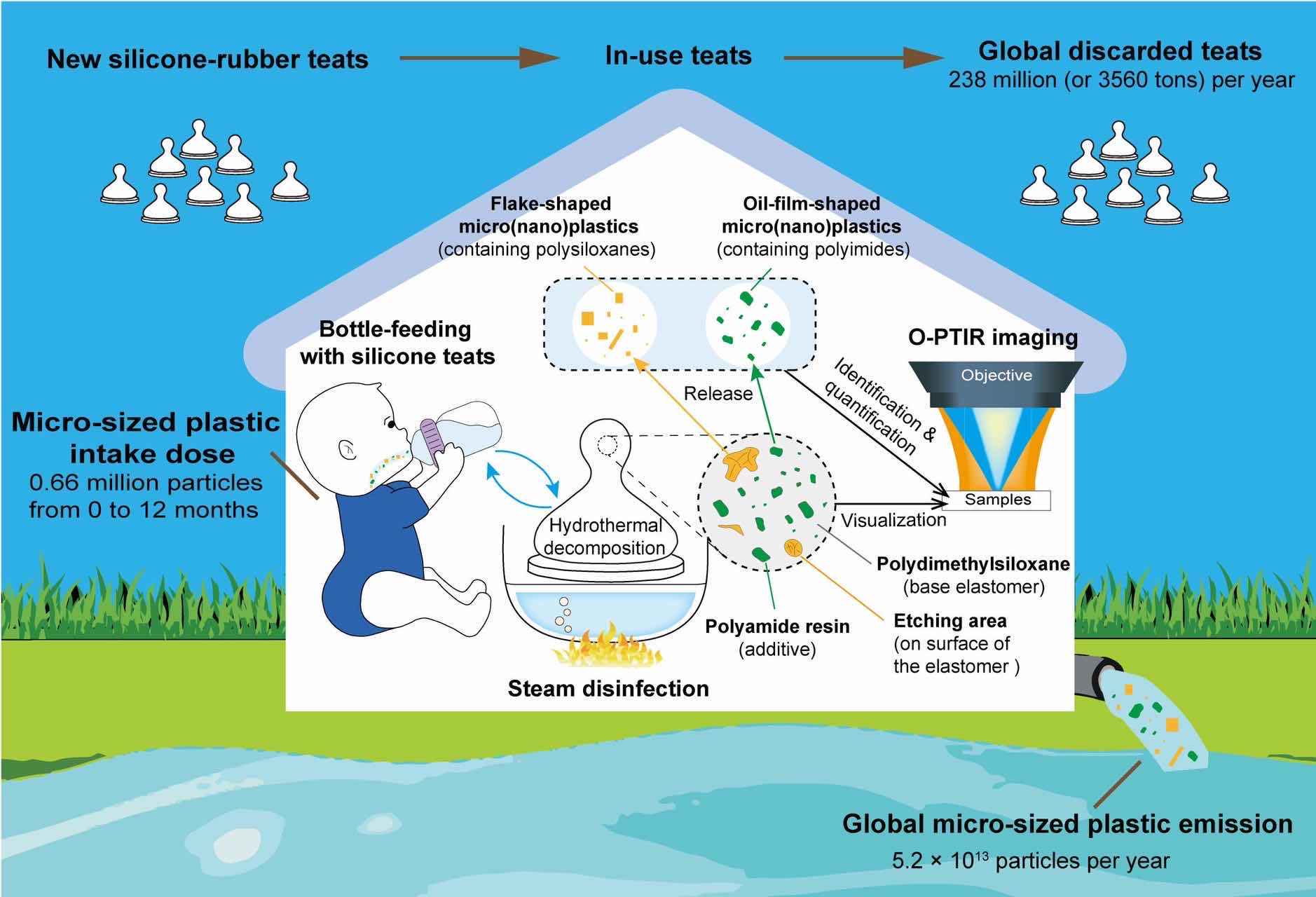Steam disinfection of baby bottle nipples exposes babies and the environment to micro- and nanoplastic particles
University of Massachusetts Amherst
Using a new microspectroscopic technique, collaborating scientists at the University of Massachusetts Amherst and Nanjing University in China have found that steam disinfection of silicone-rubber baby bottle nipples exposes babies and the environment to micro- and nanoplastic particles.
The health and environmental risks of these very fine particles are still unknown, but microplastic pollution is a growing global concern on land, in the seas and in human bodies.
The research is the first to identify this new source of
microplastic contamination.
"Babies are the most sensitive group for any contaminants, not only microplastics (< 5 mm by definition)," says Baoshan Xing, professor of environmental and soil chemistry and director of the UMass Amherst Stockbridge School of Agriculture and co-corresponding author of the research, published in the journal, Nature Nanotechnology.
"Conventional techniques are unable to detect these small particles, and the smaller the particles, the larger the physiological effect."
Xing
collaborated with lead author Yu Su and co-corresponding author Rong Ji, both
environmental scientists in Nanjing University's School of the Environment, as
well as other colleagues in China.
"Silicone
rubber was considered to be a thermally stable polymeric material in the past,
but we noticed that it undergoes aging after repeated moist heat
disinfections," Su says. "The aging and decomposition of plastics are
a major source of microplastics in the environment. We proposed and confirmed
that silicone rubber can be decomposed by moist heating to microplastics, even
nanoplastics (< 1 µm)."
Previous
research by Xing, who has been named to an annual list of the most highly cited
researchers every year since the analytics began in 2014, and colleagues in
China showed that nanoplastics -- known to widely pollute oceans, surface
waters and lands -- are internalized by plants and also reduce lipid digestion
in a simulated human gastrointestinal system.
Traditional
techniques are unable to detect particles smaller than about 20 micrometers,
which is roughly half the size of a human hair's thickness. At Nanjing
University, researchers examined the rubber nipples using optical photothermal
infrared (O-PTIR) microspectroscopy, the new and emerging technique that is
able to analyze a material's composition and morphology.
The
microspectroscope revealed numerous flake- or oil-film-shaped micro- and
nanoplastics as small as 0.6 micrometers, or 600 nanometers, in the wash waters
of the steam-disinfected rubber nipples. The technique also showed
submicrometer-resolved steam etching on and chemical modification of the nipple
surface.
"The
results indicated that by the age of one year, a baby could ingest >0.66
million elastomer-derived micro-sized plastics (MPs)… Global MP emission from
teat disinfection may be as high as 5.2 × 1013 particles per
year," the research paper states.
Xing
and colleagues point out that similar silicone-rubbed-based consumer products,
including bakeware and sealing rings in cups and cooking appliances, are also
likely to produce micro- and nanoplastic particles when heated at or above 100
degrees C. They will continue their research into the release of particles into
the environment from various plastic objects.
"We've
identified this significant new source of microplastics to the
environment," Xing says. "Some plastics go into the sewer systems.
They get into the water and landfills. They have such a long lifetime in the
environment because they don't decompose readily."
Rong
Ji, of Nanjing University, adds, "The behaviors of these silicon
rubber-derived micro- and nanoplastics in the environment are unclear. Further
research is needed to clarify their potential risks to both humans and the environment."
